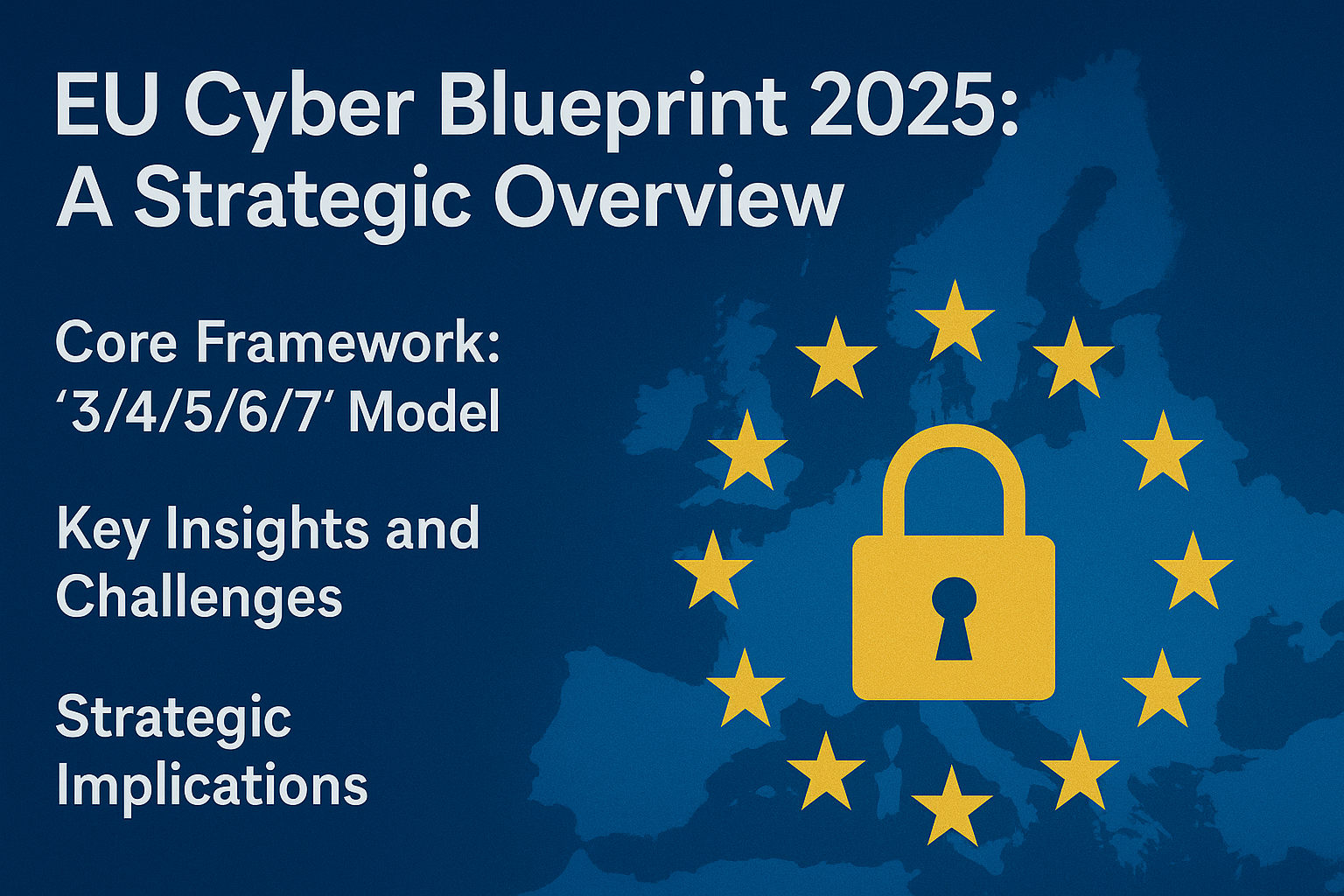The EU Cyber Blueprint 2025 establishes a multi-layered, cross-border collaborative crisis management ecosystem designed to strengthen Europe’s response to geopolitical cyber threats and to operationalize the NIS2 Directive.
By integrating key regulatory frameworks—NIS2, the Cyber Resilience Act (CRA), and the Cyber Solidarity Act (CSoA)—the Blueprint provides a legally grounded, end-to-end crisis management architecture for cyber resilience across the EU.
Core Framework: The “3/4/5/6/7” Model
🏗️ Three-Tier Escalation Mechanism
- Technical Layer: CSIRTs Network
- Operational Layer: EU-CyCLONe
- Political Layer: IPCR (Integrated Political Crisis Response)
🔄 Five-Phase Lifecycle
Preparation → Detection → Response → Recovery → Review
🎯 Five Core Functions
Situational Awareness • Joint Response • Public Communication • Direct Support • Policy Decision Input
👥 Six Key Roles
EU-CyCLONe • CSIRTs Network • European Commission • ENISA • High Representative • Europol
🛠️ Seven Response Tools
A multi-dimensional toolbox encompassing technical assistance, strategic coordination, and diplomatic countermeasures.
Key Insights and Challenges
The EU Cyber Blueprint establishes collaborative crisis mechanisms that go beyond traditional supplier–client communication models. However, this evolution introduces information asymmetry risks within the supply chain.
Under NIS2, regulated entities (defined as essential and important entities) are required to report significant cyber incidents to their national CSIRTs within 24 hours, followed by a detailed incident notification within 72 hours.
These obligations apply directly to the regulated entities, not their suppliers or technology partners. As a result, suppliers may remain unaware of incident escalations initiated by their customers toward national or EU authorities, potentially facing limited situational awareness and restricted ability to coordinate response efforts.
This creates a dual challenge: while regulated entities must meet strict reporting and coordination obligations, suppliers—often responsible for the affected systems—may be excluded from the communication loop, increasing the risk of fragmented response and accountability gaps.
Strategic Implications
To adapt, enterprises—especially technology and service suppliers—must shift from passive technical responders to proactive strategic partners in cyber resilience. Key actions include:
- Embedding NIS2 support clauses into customer and partner contracts
- Establishing CISO-level joint cyber resilience committees with regulated entities
- Delivering “NIS2-ready” information packages to facilitate faster reporting and response
- Offering “reporting-as-a-service” solutions to help clients meet regulatory deadlines
Through these measures, organizations can transform compliance obligations into opportunities—building strategic trust, strengthening collaboration, and positioning themselves as trusted partners within the evolving EU cyber resilience ecosystem.

Leave a Reply